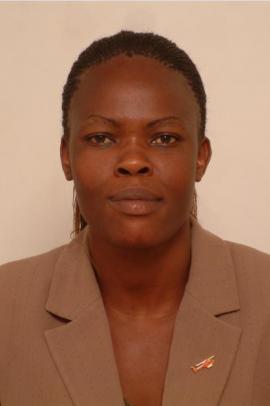Cleophas Simiyu Wanjala

Cleophas is from western Kenya and received his B.Sc. in Geology from the University of Nairobi. He later moved to West Yorkshire, UK, where he was awarded a M.Sc. in Exploration Geophysics from the University of Leeds. He has been involved in mineral, geothermal and hydrocarbon exploration projects with both international and Kenyan companies including GDC and National Oil. Currently he is the Lead Geophysicist at Sambamba Solutions Limited where he conducts research on the interpretation and modelling of seismic and EM data for seismic hazard research, resource characterization and reservoir engineering. He also runs projects in modelling gravity, magnetic and GPR datasets by integrating with other geoscientific information for geotechnical works. Finally, Cleophas is an active member of the Geological Society of Kenya (GSK), and European Association of Geoscientists and Engineers (EAGE)-platforms for sharing and enhancing geo-knowledge.
Project Summary
Thesis Title: Assessing the Hydrocarbon Potential of Offshore Lamu Basin using Nuclear Well Logs
Kenya’s sedimentary basins are similar to other basins in eastern Africa where hydrocarbons have been discovered. The recent discovery of oil in Turkana, a region initially dismissed as non-viable has prompted review of previous data and integration of modern nuclear logging techniques in exploration. The main objective of this study was to use nuclear well log data to assess the hydrocarbon potential in Offshore Lamu basin. The neutron, density, and gamma log data in LAS format for Simba-1, Kofia-1 and Maridadi-1B wells were acquired from National Oil Corporation of Kenya and subjected to well log analysis. The results were integrated with electric log data and cuttings reports for quality control. Essentially, the study determined petrophysical parameters mainly: lithology, volume of shale (Vsh), porosity, and fluid saturation to gauge the hydrocarbon reservoir characteristics of the basin. The results show, on average, three zones of interest in study area ranging between 2600 m-3900 m below mean sea level. Sandstone and limestone are the predicted reservoir formations, while shale is the interpreted source rock. The porosity at the zones of interest is 21% - 35%. The Vsh is lower, estimated at 16% - 24% in projected reservoir zones. Predicted water saturation is high 30% - 60%, and estimated permeability ranges from 21 mD to 116 mD. This results indicate the presence of hydrocarbons in the Lamu basin but whose quantity is undeterminable. The study recommends drilling of directional wells, and the use NMR technique to determine bound fluids.
Research Supervisors
- Mr. Michael J. Mangala, Institute of Nuclear Science and Technology, University of Nairobi
- Prof. Jayanti P. Patel, Department of Physics, University of Nairobi
Links
- https://scholar.google.com/citations?user=eamTKxQAAAAJ&hl=en&citsig=AMD79oo7ZpNdLkh_HTwPNhWB9H7Tr9y8Ug
- https://www.linkedin.com/in/simiyu-wanjala-maelo-6b982b14/







